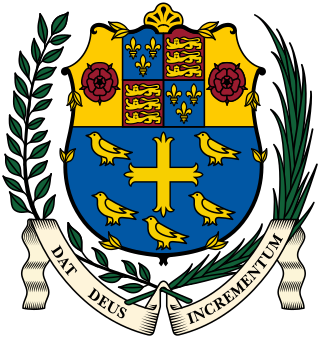
Westminster School is a public school in Westminster, London, England, in the precincts of Westminster Abbey. It descends from a charity school founded by Westminster Benedictines before the Norman Conquest, as documented by the Croyland Chronicle and a charter of King Offa. Continuous existence is clear from the early 14th century. Westminster was one of nine schools examined by the 1861 Clarendon Commission and reformed by the Public Schools Act 1868. The school motto, Dat Deus Incrementum, quotes 1 Corinthians 3:6: "I planted the seed... but God made it grow." The school owns playing fields and tennis courts in the centre of the 13-acre Vincent Square, along which Westminster Under School is also situated.
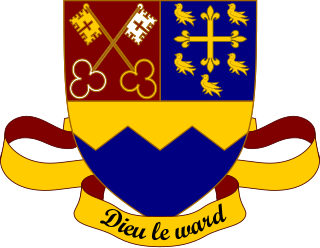
Ampleforth College is a co-educational fee-charging boarding and day school in the English public school tradition. It opened in 1802 as a boys' school. It is located near the village of Ampleforth, North Yorkshire, England, on the grounds of Benedictine monastery Ampleforth Abbey. The school is located in a valley with state-of-the-art sports pitches, wooded areas, and lakes. The school holds the oldest purpose-built school theatre in the United Kingdom, a dedicated student pub, and its own infirmary. The school has more recently received national attention for significant safeguarding failures.

Merchant Taylors' Boys' School, Crosby is a 7–18 boys private day school, located in Great Crosby on Merseyside. The school's motto is that of the Worshipful Company of Merchant Taylors: Concordia Parvae Res Crescunt.

Blundell's School is an independent co-educational boarding and day school in the English public school tradition, located in Tiverton, Devon. It was founded in 1604 under the will of Peter Blundell, one of the richest men in England at the time, and moved to its present site on the outskirts of the town in 1882.
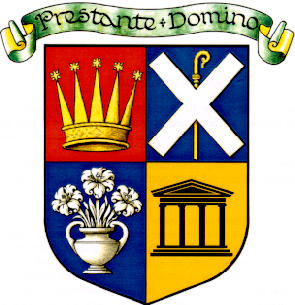
The High School of Dundee is a private, co-educational, day school in Dundee, Scotland, which provides nursery, primary and secondary education to just over one thousand pupils. Its foundation has been dated to 1239, and it is the only private school in Dundee.
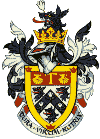
Sedbergh School is a public school in the town of Sedbergh in Cumbria, North West England. It comprises a junior school for pupils aged 4 to 13 and the main school for 13 to 18 year olds. It was established in 1525.

Kingswood School is a private day and boarding school in Bath, Somerset, England. The school is coeducational and educates over 1,000 pupils aged 9 months to 18 years. It was founded by John Wesley, the founder of Methodism, in 1748, and is the world's oldest Methodist educational institution. The school was established to provide an education for the sons of colliers and Methodist ministers. It owns the Kingswood Preparatory School, the Upper and Middle Playing Fields and a number of other buildings.

Northampton School for Boys (NSB) is an 11–18 boys secondary school in Northampton, England. It was founded as Northampton Grammar School in 1541 by Thomas Chipsey, Mayor of Northampton. Years 7 to 11 are boys-only, while sixth form classes are mixed. The school generally ranks among the best-performing in the county.

Downside School is an 11–18 mixed, Roman Catholic, independent, day and boarding school in Stratton-on-the-Fosse, Somerset, England. It was established in 1614 and is located in the Roman Catholic Diocese of Clifton.

Strathallan School is a private boarding and day school in Scotland for boys and girls aged 5-18. The school has a 153-acre (62-hectare) campus at Forgandenny, a few miles south of Perth.

St Edmund's College is a coeducational private day and boarding school in the British public school tradition, set in 440 acres (1.8 km2) in Ware, Hertfordshire. Founded in 1568 as a seminary, then a boys' school, it is the oldest continuously operating and oldest post-Reformation Catholic school in the country. Today it caters for boys and girls aged 3 to 18.
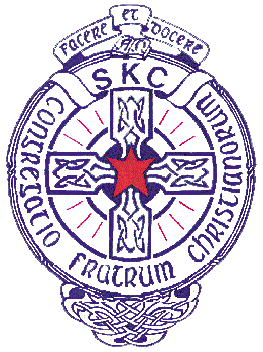
St Kevin's College in Oamaru, New Zealand, is a Catholic, coeducational, integrated, boarding and day, secondary school. It was founded by the Christian Brothers in 1927 for boys and became a co-educational school in 1983 on the closing of St Thomas's Girls' Secondary School operated by the Dominican Sisters. The sisters had already, in 1977, closed down St Patrick's Dominican College, Teschemakers, a secondary boarding school for girls located 10 kilometres south of Oamaru, with many of the students transferring to St Thomas's. Dominican sisters joined the staff of St Kevin's College in 1983. The college became a state integrated coeducational school in the same year. The Christian Brothers ceased to be on the teaching staff of the college in the late 1990s but remained the school's proprietor, and so appointed representatives to the college board, until 2019 when they transferred the ownership of St Kevin's College to the Bishop of Dunedin.

The High School of Glasgow is a private, co-educational day school in Glasgow, Scotland. The original High School of Glasgow was founded as the choir school of Glasgow Cathedral in around 1124, and is the oldest school in Scotland, and the twelfth oldest in the United Kingdom. On its closure as a selective grammar school by Glasgow City Corporation in 1976, it immediately continued as a co-educational independent school as a result of fundraising activity by its Former Pupil Club and via a merge by the Club with Drewsteignton School. The school maintains a relationship with the Cathedral, where it holds an annual service of commemoration and thanksgiving in September. It counts two British Prime Ministers, two Lords President and the founder of the University of Aberdeen among its alumni.

Salesian College is an independent Roman Catholic school in Farnborough, Hampshire, England. Founded in 1901 as a small preparatory school for boys, it soon expanded to provide secondary education owing to its increasing popularity. In November 2022, the school had a total of 634 pupils enrolled, 129 in the Sixth Form. For the 2007–08 academic year, the College announced that it would admit girls into the Sixth Form for the first time.

Queen Elizabeth's High School is a co-educational grammar school in Gainsborough, Lincolnshire, England. The school, established in 1983, but with a timeline to 1589, is an amalgamation of the previous Gainsborough High School and Queen Elizabeth's Grammar School.

All Hallows School is a non-selective co-educational prep school that provides day and boarding facilities. A Christian School in the Catholic tradition the school accepts children from all faiths and none. The school is located a mile east of Cranmore village, near the town of Frome, Somerset, in the West of England. An ISI inspection in July 2014 rated all areas of the school as 'Excellent', the highest possible rating.
Clapham College was a Roman Catholic secondary school for boys in South London.
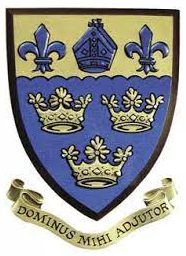
Douai School was a public school run by the Douai Abbey Benedictine community at Woolhampton, England, until it closed in 1999.

Notre Dame Catholic Academy is a Catholic secondary school and sixth form in Everton, Liverpool, England. Founded by the Sisters of Notre Dame de Namur, it was a girls' school for most of its history but became coeducational from September 2012. From June 2024, the school joined St Joseph’s Catholic Multi Academy Trust, becoming Notre Dame Catholic Academy.
Ruabon Grammar School was situated in Ruabon, Denbighshire in north-east Wales. It provided a grammar school education to boys in the parishes of Ruabon and Erbistock. Ruabon Grammar School for Boys became a Denbighshire County secondary school in 1894 and new buildings, including classrooms and laboratories were added in 1896, with further major building works taking place in the 1920s and 1940s.



















